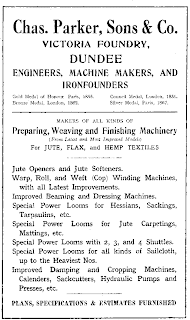
It’s no exaggregation to say that following proper procedures during the first investigation of the crime scene can make the difference between a solved crime and an unsolved one. Try the following activity to learn some of the procedures performed at the scene of a crime.
Materials
- Your bedroom or another room of your house
- Several sheets ofwhite paper
- Marking pen
- Masking tape
- Pen and/or pencil
- Notebook
- Camera (optional)
- Tape measure
- Several plastic bags
Procedure
1. Pretend a crime has been commited in the room you’ve selected. Suppose something has been stolen from the room.
2. Secure the scene of the crime. With a sheet ofpaper and themarking pen, make a sign that reads,
POLICE INVESTIGATION,
DO NOT ENTER.Use the masking tape to tape the sign across the entrance to the room.
3. Begin to record your observations of the room in your notebokk. Remember, when investigating a
crime scene, you cannot knowwaht is important and what isn’t. You need to record everything you find. If you have a camera, take severalpicture of the room.
4. Use another sheet of paper and the pencil to make a sketch of the room. Measure the dimensions of the room using the tape measure, and record the measurements in the sketch. Draw in window and door locations and the placement eny funiture.
5. Examine the roomcarefully. Record your observations in your notebook. Add to your room diagram the location ofany important items you find.
6. Begin to look for physical evidence may include hair and fibers, a glass or other object that could contain fingerprints, a diary or notebook, or anything else you think might be important. Examine the wastebasket. What do its contents tell you?
7. Save each piece of physical evidence in a plastic bag to examine later using the procedurs you’ll learn.
Explanation
The first duty at the
crime scene is to secure the scene of the crime. This is usually done by the first police officer to arrive. If a person is badly injured at the scene, the officer will give assistance and call for medical aid.
Many crimes are investigated by the police officer on duty, but in more serious crimes, such as those that involve serious injury or the loss of expensive objects, a detective is often assigned to the case. A detective has usually received additional training, beyond that given to a police officer, in how to investigate a crime. When the detective arrives, he or she begins to record the scene of the crime by taking photographs, making sketches of the site, and taking notes.
The detective or members of a special
forensic scinece team collect physical evidence.
Physical evidence cololected from the scene of the crime is stored in labeled bags or containers, and then sent to the
forensic science laboratory for later investigation.
The
investigators at the crime scene must be very careful to collect and preserve allphysical evidence and to record all of their observatios. These data will be used later to solve the crime.
Detective Science in Action
You never know when something unusual found at the scene of a crime will be important to an investigation. In 1994 Dr. Gail Anderson, a forensic
entomologist (a scientist who studies insects), was asked to aid wildlife enforcements officials who were trying yo put a stop to
poaching (the killing of wildlife either without a license or out of season). In British Columbia, Canada, poachers often kill black bears and take their
gallbladers, small internal organs that are valuable in certain cultures.
Investigators found insects on several black bears that had been killed by poachers. Dr.Anderson knew that insects have specific stages of development, from egg to adult. By examining the stage of the insect’s development and working backward, she was able to approximate the actual date the bears were killed. Wildlife officials could then focus their investigation on individuals who were in the area on that day. The insects found on the bear’s eventually led to the arrest of the poachers.

























